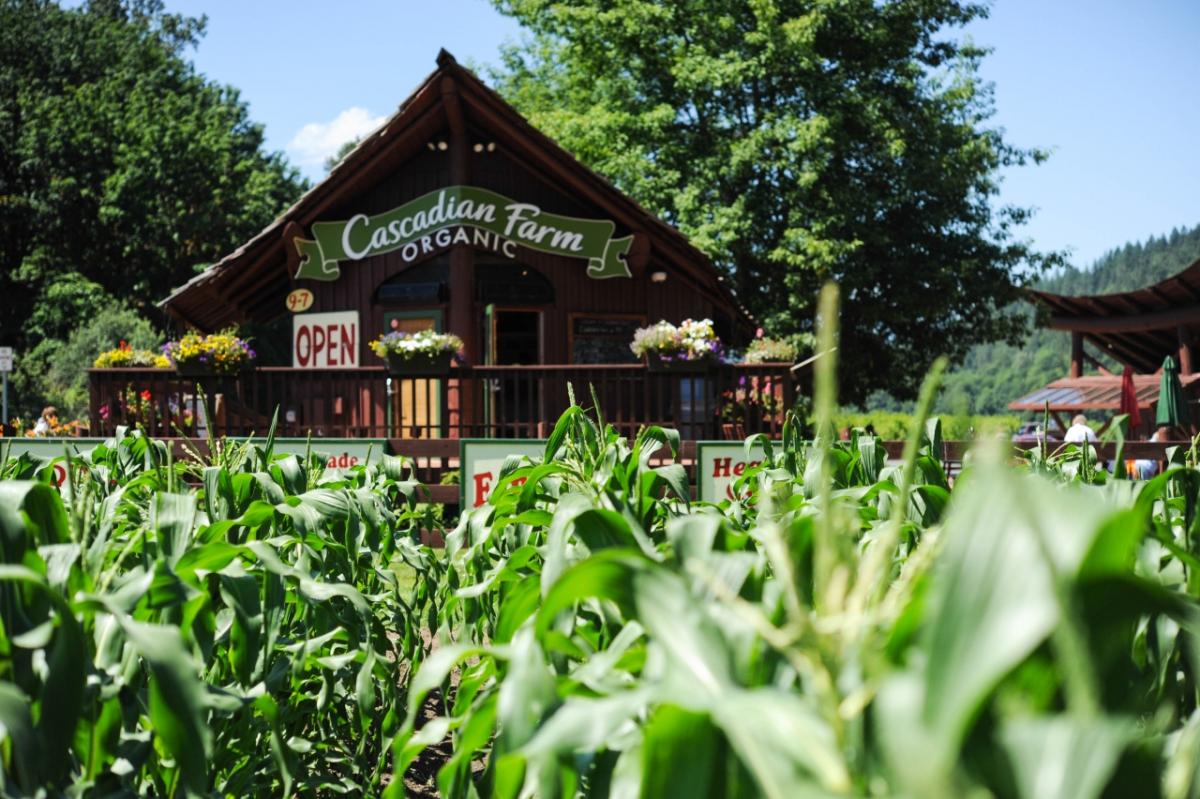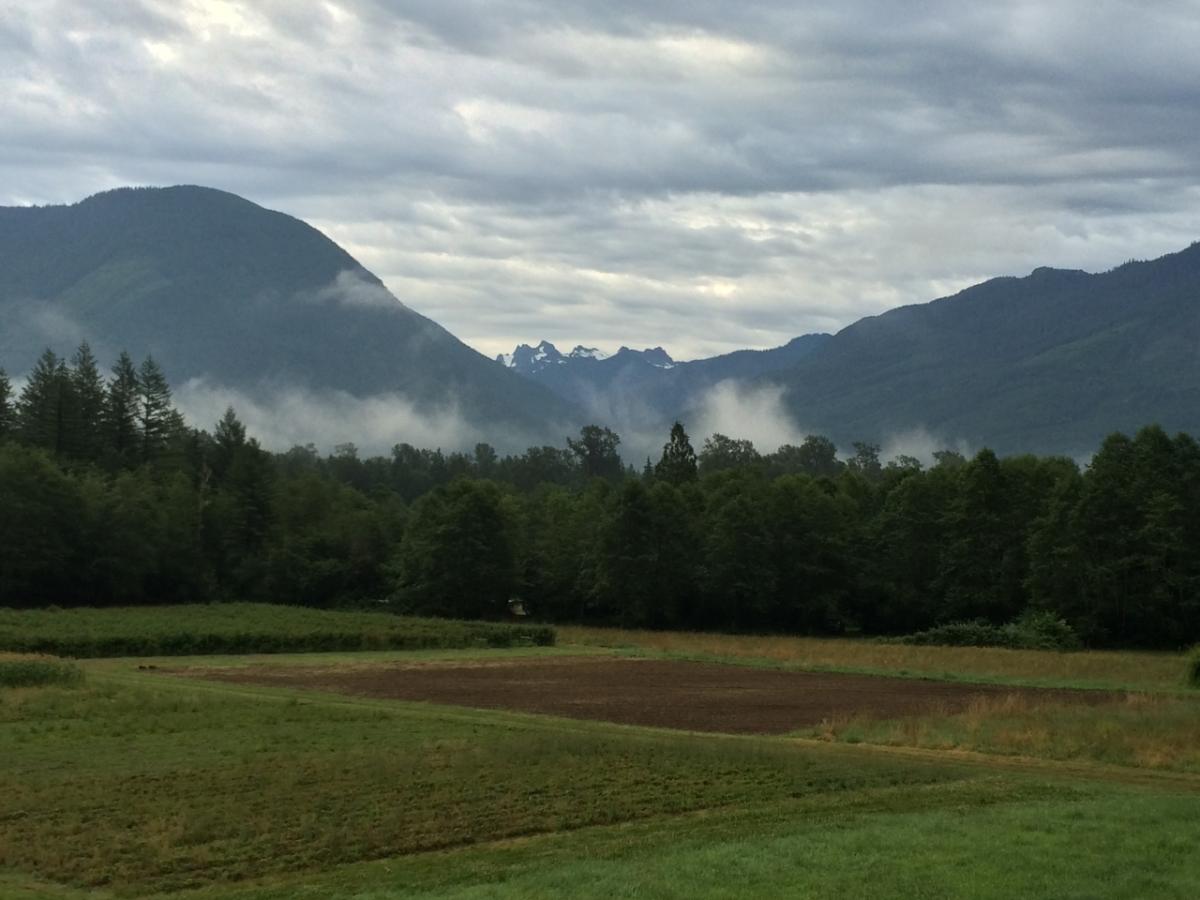Where Conservation and Food Intersect
Where Conservation and Food Intersect
Some of my earliest – and fondest – memories are from the time I spent on my grandparent’s farm in in Swift County, Minnesota.
They farmed 2,000 acres of conventional corn and soy. They also raised a couple hundred hogs each year.
Growing up in suburban Minnesota, I craved the farm experience. I adored being on the farm and hearing stories of farm life. Riding on the combine with my grandpa, running through corn fields, holding piglets and eating produce straight from the garden are vivid memories that led to my role today as site director of the Cascadian Farm home farm.
Grandpa and I were born sixty-three years and one day apart. I spent every birthday and many weekends at the farm relishing the freedom that rural life provided for a young girl from suburbia.
These experiences sowed the seeds for what became my intrigue with environmental conservation and my admiration for the hard work, creativity, and perseverance that it takes to farm for a living.
At the University of Minnesota-Duluth, I followed my interests and pursued a degree in environmental studies. Learning about the toll that food and fiber production can take on our land and natural resources was an eye opener. I became increasingly passionate about the intersection of food production and natural resource conservation.
My first job out of college was working for the Xerces Society, providing administrative support to their pollinator program and performing outreach to farmers and landowners. I found myself fascinated with every farmer I spoke to – learning about their farming systems, crops, and hearing their passion for working the land and growing food. I was eager to get back to the farm.
When I found the site director position at Cascadian Farm home farm during the spring of 2014, I knew it was the right step for me. I was excited about the opportunity to work on a small farm that could influence positive changes within a big company like General Mills.
As site director of the home farm, I’m responsible for all aspects of business, research, production and outreach. Like all farm-based jobs, my days are diverse and change with the seasons.
Today, our mission is to advance organic and regenerative farming systems by demonstrating, educating and advocating for a food and farming system that protects and conserves natural resources and encourages healthy communities.
We demonstrate and bring to life General Mills’ sustainability and sourcing commitments to customers, consumers, and the supply chain. More than 60,000 people visit the Cascadian Farm home farm every year. It delights me to be able to provide a farm experience to so many people.
A typical day may be anything from making production decisions to fixing equipment to coaching employees or participating in community events.
The daily challenges and delights of the job keep me on my toes. Every new challenge I overcome builds my confidence in managing a diverse small farm.
The farm is a mere 28 acres, growing organic blueberries, raspberries, strawberries, sweet corn, pumpkins, and greenhouse tomatoes and peppers. The majority of our produce is sold through our roadside stand with a small number of blueberries going to the Cascadian Farm supply chain.
This land is where founder Gene Kahn began with Cascadian Farm in 1972. General Mills acquired Cascadian Farm in 2000, and Kahn became the first chief sustainability officer at General Mills in 2003.
His mission was to change the world through agriculture. Although his organic farm has undergone many changes and iterations since its founding, this site has always had a powerful way of instilling a deep sense of responsibility to care for the land and share its story with as many people as possible.
“I hope that some of these visitors connect with the farm in a way that positively influences how they interact with food, farming, and the environment.”
In some ways, this is a much different farm than the one I spent time on in my childhood. But in many ways, they are very much the same. Both farms are managed by people who are passionate about being good stewards of the land and providing food for people. Both have equal potential to make a positive impact on the natural resources they use and the communities they serve.
“To meet today’s environmental and social challenges to feed a growing world, we need everyone to be engaged and ready to roll up their sleeves and be a part of the solutions.”
Read other You Grow, Girl! blog posts and learn more about General Mills and our commitment to sustainable sourcing and supporting smallholder farmers in our 2017 Global Responsibility Report.
Have an idea for a story you’d like to see on “A Taste of General Mills”? Please let us know via email at contact.blog@genmills.com.
Subscribe to “A Taste of General Mills” by email – here – and we’ll notify you about our latest posts.





